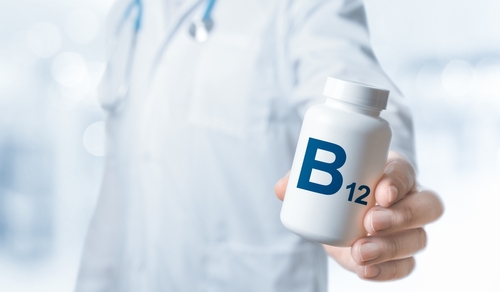Vitamin B12 and GLP-1 Therapy: What You Should Know
Explore how GLP-1 therapy might influence B12 status, how to monitor for deficiencies, and ways to manage B12 safely with guidance.

When using GLP-1 medications, concerns sometimes arise about how they might affect nutrient absorption — including vitamin B12. While the evidence is still evolving, it’s wise to approach B12 with awareness, not alarm. Below is a balanced, evidence-informed look at what the research suggests, practical strategies, and precautions you may want to follow with your healthcare provider.
Why B12 May Become a Concern
Several mechanisms could theoretically interfere with B12 status in people on GLP-1 therapy:
- Slower gastric emptying: GLP-1 drugs slow how fast food leaves the stomach, which might delay the release of B12 from food and affect absorption.
- Reduced stomach acid / intrinsic factor activity: B12 absorption depends on stomach acid and intrinsic factor — both of which could be altered by changes in digestive physiology.
- Lower food intake: Because GLP-1 therapy often suppresses appetite, total dietary intake can decline, which may reduce B12 intake from food.
These factors don’t guarantee deficiency — many people maintain healthy B12 levels — but they present a plausible risk, especially over long periods or in individuals with other risk factors.
What the Evidence and Guidelines Say
- Some sources suggest monitoring B12 levels in people on long-term GLP-1 therapy, particularly if symptoms of deficiency appear.
- There is no definitive guideline that mandates routine high-dose B12 supplementation for all GLP-1 users.
- In one article, combining B12 with GLP-1 compounds is discussed as a theoretical approach, but it lacks strong clinical proof.
In short: The possibility of B12 deficiency is recognized, but the evidence base is not strong enough yet to support universal supplementation without individualized assessment.
Signs to Watch For (Potential B12 Deficiency)
If B12 levels drop, symptoms may gradually emerge. Some things to watch for include:
- Fatigue, weakness, or low energy
- Pale or jaundiced skin
- Numbness or tingling in hands or feet
- Difficulty walking or balance issues
- Memory problems or difficulty concentrating
Because many of these overlap with other conditions (or with the effects of weight loss), vigilance and medical evaluation are important.
How to Approach B12 Safely in GLP-1 Therapy
Here are practical steps to consider, under supervision of your healthcare provider:
- Baseline and periodic testing
Ask your clinician to check B12 (and related markers like methylmalonic acid or homocysteine) before and intermittently during therapy. - Optimize dietary sources
Include B12-rich foods such as lean meats, poultry, fish, dairy, eggs, or fortified foods — especially if appetite allows. - Consider supplementation when indicated
If lab tests show low B12 or borderline levels, your provider might recommend oral or injectable B12, depending on absorption and symptoms. - Track symptoms over time
If you notice signs of deficiency, bring them to your provider’s attention promptly, even if labs initially seem normal. - Avoid assuming “more is better”
Excessive B12 dosing without medical indication may not confer added benefit and could mask other issues. - Complementary nutrients
Support digestion with adequate folate, B6, and general micronutrients to help maintain balanced methylation and red blood cell health.

.jpg)

